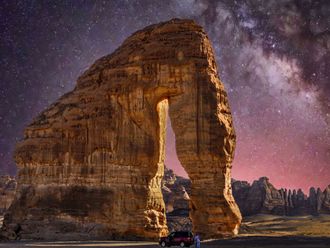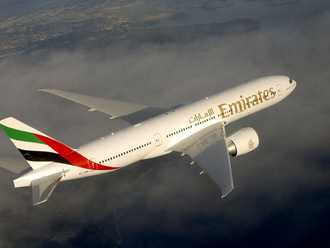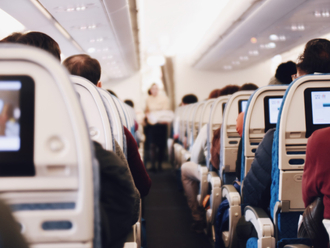The true geographic pole of 90˚ North is one of the most inaccessible places on the planet. It's where temperatures of -20 to -300˚C are considered balmy. The only life you're likely to see there are seals, bearded scientists or possibly the polar bear that's been silently stalking you for its supper.
Unlike the South Pole it's not even on dry land. It lies beneath a shifting sheet of ice that stretches from the shores of Russia to the glacial plains of Canada and Greenland. But now thanks to the enterprising Russian agency VICAAR, the North Pole is becoming more accessible.
In addition to ice breaker tours in summer they also operate the floating ice camp Barneo during the month of April. A time of year when the daylight lasts all night and the ice is still solid enough to support you.
From there it's just a short helicopter ride to the last degree of latitude before you hit the pole.
So what used to cost a small fortune – a North Pole expedition – now costs about as much as a new sensible family car, still not cheap, but how does a car compare to real life experience?
Countdown: four days
It takes four flights to reach Svalbard, an island off the Norwegian coast. I set off for the airport before dawn, the waning moon a reminder that I won't be seeing night for at least another nine days.
My connection through Paris makes its way north to Oslo. Then onto Tromso the self-titled 'Gateway to the Arctic'.
The flight is something else. I've read about the beauty of the Norwegian fjords and as the plane descends into the small city through picture postcard mountains and rocky inlets, the realisation hits me - I'm going to the North Pole.
On the final leg to Svalbard the hairstyles and high fashions of Oslo and Paris are long gone. "I'm pleased to announce the weather in Svalbard's Longyearbyen is a glorious -290˚C," quips the captain.
We fly over an even more mountainous Svalbard shoreline. In the murky twilight that passes for night time at this latitude, I'm struck by the sheer size and emptiness of the place. As we approach Longyearbyen airport, small bergs dot the cold slate grey of the unforgiving sea beneath us. The forced good humour of the captain makes sense, if the engines fail and we plunge into those freezing waters, we're dead – it's that simple.
Thankfully we don't and I'm met at the airport by a smiling Sascha, our driver, and Mikhail Lamakin, an Arctic climatologist by training and guide for our journey. Behind me an excitable Alexei Dmitriev bounds over to tell us he's just seen the Arctic marathoners heading out to Barneo.
A marathon at the pole makes a strange kind of sense; to stay warm you just have to keep going.
Countdown: three days
Mary-Ann Polarrigg is an old mining lodge; the clean and simple single room I've booked is functional and, above all, warm.
Over breakfast, I meet 10 submariners from the Indian Navy on their way to ski the last degree of latitude to the North Pole. Raj Kumar, the leader of their expedition, tells me that they have a passion for adventure; they've previously scaled Everest and trekked to the South Pole.
The morning is spent collecting our arctic kit from the expedition warehouse. Then Alexei takes me to meet the town's cultural heritage adviser to discuss the flexible dynamics of land issues and citizenship that affect Russian and Norwegian business interests.
We then head out for food, coffee and last-minute supplies. At the Kroa Bar
we realise we really are a long way from everywhere else. It's the first place I've ever seen whale meat on the menu, forbidden in most parts of the world.
Mikhail treats our six-person group to dinner. It's an opportunity for us all to meet for the first time. We're independent men and women with bloodlines from the Middle East, Asia, Europe and the Americas. World citizens with nationalities that don't necessarily match our heritage.
This leads to an inevitable but short-lived game of 'who's the spook?' Nobody wins. We make the most of our last opportunity for a real meal, from here on in it's packet food and melt water.
Countdown: two days
Our sleds are packed high with tents, cooking equipment, gas, dried provisions and skis. On board the Russian Antonov 74 airplane we're joined by the Indian Navy, along with an American and a Russian, Kai and Sergei, here for a longer nine-day ski trek to the pole with their Austrian guide Christophe.
Also on the flight is Georges Baumann, a lone explorer on a test-run for a coast to coast trek from Siberia to Canada.
The AN74 looks rickety, but thankfully flies smoothly. At Barneo, we are met by Victor Boyarsky, arctic explorer and organiser of our trip. It's his agency VICAAR that makes all this possible. We place our gear next to the wonderfully warm tent only to find out our departure is going to be delayed by at least a day.
With nothing else to do, we pitch a camp nearby and get to know our way around. Victor shows us how to make the gas stoves work in cold temperatures, essential guidance as they're our only source of heat.
When I venture outside to take photographs of the Indians leaving for their first day of skiing, the temperature falls below -350˚C. I'm wearing thin camera friendly gloves and within two minutes my hands are so cold they hurt to the point where I begin to feel sick.
I rush back to the tent and literally thrust them into the stove's flame to warm them up. Once they've defrosted, I grab a heavier set of gloves and head back out.
That evening my tent mate and I tuck into one of the many packs of dehydrated food we've been given.
In the Arctic Circle you don't have to watch your calories. On an average trek you'll burn somewhere in the region of 7,000 calories a day.
In our daily meal boxes there's over 5,000 high-fat calories and it seems like we're eating constantly just to maintain energy levels.
Water is also not an issue; we're surrounded by it. The pot is constantly on the boil melting palatable drift snow and salt water of the ice.
And there's the thing about the Arctic, it feels like land but it isn't, even though you can walk over the horizon in any direction the occasional whiff of salt water and the sensation of the ice moving beneath your feet reminds you where you are.
Night stubbornly refuses to fall but we eventually settle into our -400˚C rated sleeping bags, remembering to zip up the neck section to seal the warmth into our bodies. Then it's warm hat pulled down over the eyes and the sleeping bag's hood over the face to block out the midnight sun.
It doesn't work, the light keeps us awake and we chat until the early hours, too excited to sleep.
Countdown: one day
We're supposed to head out today and make for the pole, but one of our team is ill. She stays wrapped up in the tent and tries to recover while Christophe takes us on a training day with skis and partially loaded sledges. We change into thinner gear which in the extreme cold seems a perverse thing to do.
Christophe tells us that if we don't, we'll overheat when we're skiing hard.We head out into the icy expanse of this great northern desert.
It's wonderful to be away from the claustrophobia of camp. The two strongest skiers break away. I'm not far behind them and, just like yesterday, my hands begin to freeze.
I want to ask someone what I should do, but the guys ahead are out of hearing range and the rest of the group is way behind me. I push on as hard as I can in an effort to keep the blood flowing through my extremities.
Eventually Christophe tells me to spin my arms through the air to get the blood flowing, but after two minutes I still can't feel a thing. Then he gets me to straighten my hands out. Hot needles of pain stab through the senseless fingertips as the blood begins to flow back into them. But I don't care, it's a happy pain.
Zero
The camp is stripped down and packed on our sleds and we board the MI-8 helicopter that will take us to our final destination a half day's ski from the pole.
We've lost a day already and with illness still in the group the decision has been made that we camp out for an extra day rather than ski.
For a city kid like me, only a few short hours from the North Pole, it's still a dream coming true.
The helicopter is noisy but warm and flown by the hardiest and hairiest looking pilots I've seen outside a war zone. We sit in two long lines on either side of the deck and stare out over the vast emptiness and wide cracks of open water beneath us.
There's nothing and nobody out there, no wonder my insurers were getting twitchy about recovery costs. We drop off Kai, Sergei and Christophe for the 110 km and seven days of their last degree ski trip. They have a lot of distance to make up.
Like us, they've left a little later than planned and with the ice constantly moving beneath your feet you can ski all day and find the drift has taken you back further than you've skied.
Then it's our turn. We drag our sleds from the chopper and prepare our harnesses and skis for the trek ahead. It's beautifully sunny but it's deceptive. Subconsciously you still expect the sun to be warm.
With no camp nearby and the helicopter gone, the last vestiges of civilisation are behind us and for the first time since we arrived in the Arctic I feel free.
The wind is behind us and our pace fast, the sweat is pouring off us. My hand freezes up again but this time I know how to fix it. The sleds topple over in the snow-filled cracks between ice sheets and stick on ridges but overall there's nothing to do except switch off the whining monologue of commutes, deadlines and suburban stress and let the wilderness take over.
Victor is leader for the North Pole stretch of our trip and he pauses for a break. He points in the direction of the pole and tells us it's been moving around us as we've been skiing.
We push on and only a couple of kilometres later Victor cries out: "We're here!"
He fires a flare to mark our position and we grab quick photographs of each other. Before we've even had a chance for our arrival to sink in we're off and heading towards a sheltered spot nearby. Once we've made camp, we dive into our tents for a hearty meal and a well earned sleep.
Day one, after
When I wake, I can't stop smiling. We're at the North Pole. I repeat this quietly to myself as I light the fire.
We endure a breakfast of salty porridge and brackish tea. Outside the tent
we hear our neighbours talking; apparently the industrious Alexei has been walking around in bare feet and dug a camp toilet for us during the early hours. Bless him.
Victor greets us with thin clothing, whereas I've got about four layers of thermal clothing on. I guess that's the difference when you've acclimatised a little.
And I find this happens during our enforced break. We have time to wander around our small camp and over the icy ridges nearby. Whereas two days ago my fingers could barely cope with a couple of minutes, now I am happily snapping away with my camera and passing the time of day chatting with my neighbours.
In Victor's tent he offers me his Satellite phone and I make two calls home – my grandparents and mother. The hint of disbelief and awe in my family's voice makes it all seem much more real.
Initially we even moaned about not being able to ski more and then about having to spend a day on ice simply camping, but I'm so glad we did. You get a real sense of where you are after 24 hours in the same spot.
Your routines become established, you know what works to keep you warm and what doesn't.
You also develop a sense of where you really are – on top of a planet with a fiery ball of light circling overhead. Time loses its meaning, depending on which way you face it can be either midnight or midday. The nearest we get to a sunset is the Arctic twilight. It's a truly magical light, one that neither I nor the camera know how to truly capture.
Day two
The following morning we pack up all the tents bar one and Victor offers us a traditional and perfectly chilled Russian toast for breakfast. The helicopter takes us back to Barneo and then the plane back to Longyearbyen and a comfortable night in a superior room of the Radisson SAS Polar Hotel, the northernmost full service hotel in the world.
Over dinner Victor presents us with a certificate of our trip and small statue. A dark metal spike driven into a slice of white Italian marble that looks just like a piece of Arctic ice.
Traditionally the Inuit thought of the pole as a spike, the twist in its stem is Victor's addition and represents the suffering endured by those who travel there.
Day three
My last day is spent recovering and buying souvenirs and postcards before catching the red eye flight back home.
The receptionist of my third hotel, The Spitsbergen Guesthouse, a local, spies the VICAAR North Pole badge on my jacket. 'You really went to the North Pole?' she asks.
'Yes, of course,' I say.
She nods her head with a newfound respect. I'm quite taken aback; you get it in your head that everybody does this, even though I know only 200 people will make the trip from Barneo this year and we were the first people to ski from there this season. Emma-Kate, one of our group, was only the second Australian woman to ever ski to the pole.
The journey back
Flying out of Svalbard and along the Norwegian fjords is even more spectacular than flying in. I fight the urge to run up to people and say,
"Do you know where I've been?" By the time I make my connection in Paris, I'm longing for the wide open spaces and marketing-free landscape I've left behind.
A few days later the sensation of having done something unique, different and unlike everything else remains. Thank goodness I didn't buy a sensible car. Next time I think I'll try to stay a little longer.
To get there
Expeditions VICAAR and www.northpolextreme.com run North Pole expeditions and operate the Barneo ice camp during the month of April as well as ice breaker tours and husky rides throughout the rest of the year.
There are several other operators offering specialised trips through VICAAR/Barneo like www.voyageconcepts.co.uk who the Indian Navy used, www.icetrek.com and if you've got the stamina, try www.npmarathon.com for an Arctic marathon. You can also travel to the pole from Canada and Greenland, see www.thepoles.com
Svalbard accommodation
- Mary-Ann's Polarrigg: One to four person guest house rooms in the Polarrigg and Luksus-riggen. www.polarriggen.com
-Radisson SAS Polar Hotel Spitsbergen: This full service hotel offers suites all year round. The hotel has an amazing view from the dining area and a spa on the way.
www.radissonsas.com
-Spitsbergen Guesthouse: The backpacking and budget traveller option, again clean, comfortable and warm but less sound-proofed than all the rest. www.spitsbergentravel.no
- Basecamp Hotel: A timber themed but well thought out hotel in the style of a trapper's cabin with the gourmet Kroa Bar on site. www.basecampexplorer.com
Excursions
Dog-sledding, glacier treks, skidoo expeditions, ice breaker tours, sailing and trips to old mines can all be booked through your hotel and the websites above.


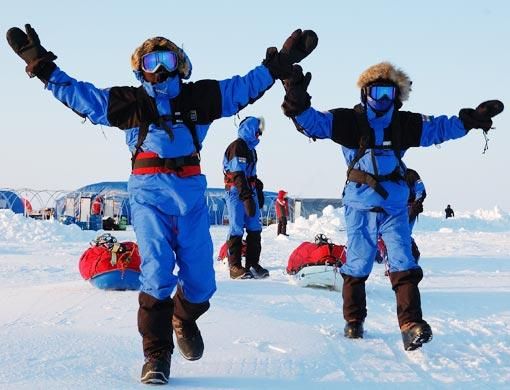
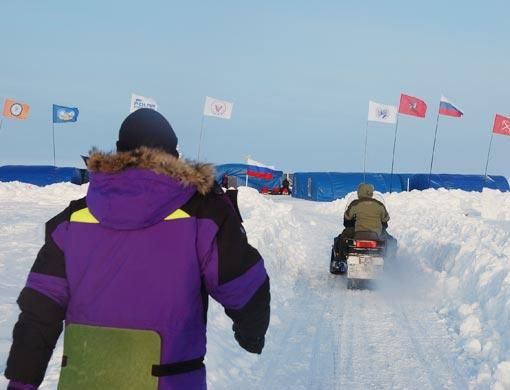
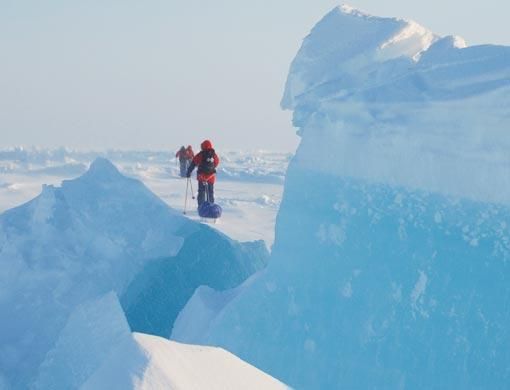

_resources1_16a08544951_small.jpg)





